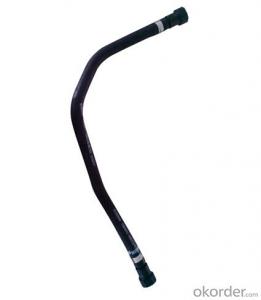Solar Inverter Requirements
Solar Inverter Requirements Related Searches
100w Solar Panel With Inverter Best Solar Panel Inverter 5000 Series Cast Aluminum Plate Portable Solar Panel Inverter First Solar Series 6 Module 12 Volt Solar Panel Inverter Plastic Solar Lanterns Buy Solar Panel Inverter Solar Panel Inverter Cost Solar Panel Without InverterHot Searches
Type Of Inverter For Solar Types Of Inverter For Solar Used Solar Inverter For Sale Inverter Size For Solar System Solar Edge Inverter For Sale 5kw Solar Inverter For Sale Solar Inverter For Sale Solar Inverter For Battery Solar Inverter For Split Ac Solar Inverter For Laptop Solar Inverter For Fridge Solar With Inverter Price Solar Inverter With 2 Battery Solar Inverter Price In China Best Solar Inverter In China Solar Inverter Price In Dubai Solar Inverter Price In Uae Solar Inverter Price In Kenya Solar Inverter Price In Kerala Solar Hot Water Collectors For SaleSolar Inverter Requirements Supplier & Manufacturer from China
Okorder.com is a professional Solar Inverter Requirements supplier & manufacturer, offers integrated one-stop services including real-time quoting and online cargo tracking. We are funded by CNBM Group, a Fortune 500 enterprise and the largest Solar Inverter Requirements firm in China.Hot Products
FAQ
- Yes, a solar inverter can be used in three-phase systems. Three-phase systems are commonly used in industrial and commercial applications, and solar inverters are available in both single-phase and three-phase configurations to accommodate these systems. The three-phase solar inverter converts the direct current (DC) generated by the solar panels into alternating current (AC) that is compatible with the three-phase power grid.
- The role of a power factor correction circuit in a solar inverter is to improve the power factor of the inverter, ensuring that the power drawn from the grid is used efficiently. By reducing the reactive power and bringing it closer to the real power, the power factor correction circuit helps minimize energy losses and optimize the overall performance of the solar inverter.
- The key factors affecting the warranty coverage of a solar inverter include the length of the warranty period, the reputation and reliability of the manufacturer, the quality of the components used in the inverter, any specified usage restrictions or limitations, and the level of technical support and after-sales service provided by the manufacturer.
- Yes, a solar inverter can be used with a solar-powered remote monitoring system. The solar inverter converts the DC (direct current) electricity generated by the solar panels into AC (alternating current) electricity that can be used to power the remote monitoring system. This allows the system to be powered by solar energy and provides the necessary electricity for monitoring and data transmission.
- The role of a solar inverter in preventing electrical faults is to convert the direct current (DC) electricity generated by solar panels into alternating current (AC) electricity that can be used in homes and businesses. In doing so, the inverter helps maintain a stable and consistent flow of electricity, which reduces the risk of electrical faults such as short circuits, overloads, or voltage fluctuations. It also includes various protection mechanisms, such as ground fault detection and interruption, to ensure the safety and reliability of the solar power system.
- Yes, a solar inverter can be used in commercial or industrial applications. In fact, solar inverters are commonly used in these settings to convert the direct current (DC) generated by solar panels into alternating current (AC) that can be used to power various electrical devices and equipment in commercial and industrial buildings.
- Yes, it is possible to upgrade your existing solar inverter without replacing the entire system. In some cases, you may be able to replace the inverter with a more advanced model that offers improved efficiency or additional features. However, it is important to consult with a professional to ensure compatibility and proper installation.
- To size a solar inverter for a solar power system, you need to consider the maximum power output of your solar panels. Calculate the total wattage of your solar panels and choose an inverter with a capacity slightly larger than that. It is important to ensure that the inverter's capacity can handle the maximum power output of your solar panels to avoid any performance issues or damage to the system.














































